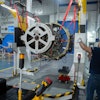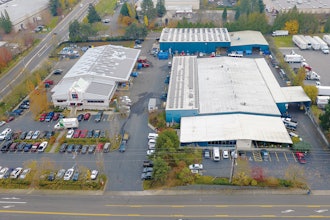As we approach 2017, optimism for the manufacturing industry has never been brighter. From improved technology processes across supply chains to a new U.S. President with a different vision. President-Elect Trump’s position to incentivize “reshoring” through a likely tax preference and other forms of government-based initiatives, manufacturing is expected to be the big beneficiary and therefore, create more jobs right here in America. I do not believe these actions will be as much focused on tariffs, but rather in a form of tax incentive structures. Below are five more predictions, trends and expectations for the New Year:
- 3D printing creates increased opportunity, faster prototyping and disruption. Manufacturers will see opportunity for faster, less expensive production as 3D printing continues to enter more and more industries. Rapid prototyping, a highly cost-effective way for product designers to test and troubleshoot their products, will accelerate as 3D printing availability expands, this will become the norm. However, as 3D printing becomes more mainstream and accessible to consumers, manufacturers will see greater disruption of their traditional business models. Here’s how. Since consumers have the potential to be involved in the product design process through 3D printing, this could create design demands that are unattainable from a manufacturing deliverable.
- Look for Augmented reality (AR), Virtual reality (VR) and Crowdsourcing. AR and VR are taking hold in factories around the world, where these technologies are used to offer direction and troubleshooting to workers in real time, as they’re working on a task. 2017 will see this trend grow, as people become more comfortable with AR, in particular. Another way companies can get real-time feedback and swiftly shift direction is through crowdsourcing. While this has helped more independent inventors achieve a path to market that they couldn’t before — companies will increase their use of crowdsourcing. What used to take months, even years, and the expense of 3rd parties — now companies can go direct to their customers. Soliciting feedback and new product ideas via social media is an effective and increasingly popular tactic.
- Increased need for tech manufacturing with even shorter product lifecycles. The Pew Research Center reports that a median 68 percent of adults in advanced economies own a smartphone. In emerging economies, smartphone ownership is rapidly rising, as is internet usage. The demand for these and other technological products is only going to increase, and manufacturers must innovate if they’re going to keep up. But because tech products have much less of a lifecycle, they become out of date much sooner. The challenge for manufacturers will be turning out quality items while still keeping up with the necessary changes to existing products, and the need for new ones.
- More green initiatives and sustainable manufacturing. Millennials are exerting greater power as a purchasing group, and they continue to be very environmentally conscious. The increased demand for sustainable products as well as advances in alternative energy and technology means it will become more important — thus easier — for facilities to reduce waste and pollution while also reducing manufacturing costs.
- Artificial intelligence decreases production time but more speed in consumer demand. Like AR and VR, AI is changing the way factories work. For example, AI robots can now identify defective products in real time, pull them from production, and order a replacement. That prevents production of thousands more defective products, saving a manufacturer millions of dollars and drastically shrinking production time. This will be necessary to stay competitive because there will be a faster emergence of consumer demand. New items, concepts and trends can spread very quickly thanks to social media. Product designers and manufacturers need to be attuned to this chatter in order to avoid falling behind in their industries.
The good news for 2017 is that rapid design is possible with advanced software and rapid prototyping, design teams are able to design new products in days — even hours — instead of weeks and months. This will shorten the time to market for thousands of products and help companies position themselves for improved profits. All in all, if you are a manufacturer or part of the supply chain that services them — 2017 looks to be a year of great opportunity and growth.
Mark Dohnalek is President & CEO of Pivot International.






















